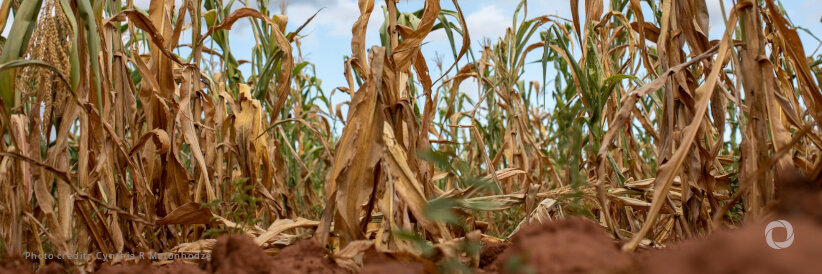United Nations officials have urged for international support to help Zimbabwe address the humanitarian impacts of El Niño that are threatening 7.6 million people with acute hunger. More than half of the harvest has been destroyed because of a historic drought induced by the 2023-2024 warming El Niño episode.
Shifted rainfall patterns and long dry spells during the critical planting season left large parts of the region with insufficient rainfall and above-average temperatures. The drought has deeply impacted Zimbabwe’s economy, forcing the government to reduce growth projections. The country is also facing critical water shortages, and more than 22 per cent of school-aged children are out of school because of the economic and social impacts of the drought.
Reena Ghelani, the United Nations Assistant Secretary-General and climate Crisis Coordinator for El Niño – La Niña and Valerie Guarnieri, the Assistant Executive Director of the World Food Programme, made this call with Edward Kallon, the UN Resident and Humanitarian Coordinator for Zimbabwe, as they concluded a week-long drought-assessment mission to the country.
The United Nations and its partners are supporting the Government’s efforts to assist affected communities and families and build long-term resilience. The UN Office for the Coordination of Humanitarian Affairs (OCHA) is supporting humanitarian response coordination efforts.
”It’s tragic. Families have harvested nothing at all, and their food stocks are empty,’ said Valerie Guarneri, WFP’s Assistant Executive Director. ”Families are now making survival decisions as the situation continues to worsen. during the peak of the lean season between January and March next year and we are in a race against time to provide assistance.”
During their week-long mission, the delegation met with senior Government Officials including the Vice-President of Zimbabwe His Excellency Dr Constantino Chiwenga, Minister of Local Government and Public Works Honorable Daniel Garwe, Members of National Drought Response Inter-Cabinet Ministers, the Department of Civil Protection (Zimbabwe’s disaster management authority), local authorities and humanitarian workers on the ground as well as communities most affected.
They visited Matobo District in Bulawayo and Umguza District in Matebeleland Province where they witnessed first-hand the impact of the drought and efforts made to support climate-smart agriculture, provide alternative income in urban areas, and prevent gender-based violence against women and girls.
“The people we’ve met in Zimbabwe are facing a historic drought and need urgent support now.” Reena Ghelani insisted “Moreover, Southern Africa may be facing extreme droughts like this one every decade: we need support for the medium term so that communities are not vulnerable to future shocks.”
According to the latest estimates, 5.9 million people in rural areas and 1.7 million people in urban areas may face acute hunger during the coming lean period, and until the next harvest in April 2025. In April, the President declared a nationwide State of Disaster due to severe drought caused by the El Niño weather conditions. In May, the Government launched a national plan to address the impact of the drought, supporting food distribution and imports. The UN-coordinated Drought Flash Appeal for Zimbabwe, which brings over 60 organizations together to complement national efforts, is requiring $429 million to assist 3.1 million people this year but is only about 20 per cent funded.
Edward Kallon explained: “Thanks to early funding from the UN Central Emergency Response Fund, the African Risk Capacity, and other partners, the UN and partners have been able to kickstart anticipatory action and early response activities to mitigate the worst impacts of the drought. Now we need to scale up the response, to ensure that no one dies of hunger and children remain in school.”

